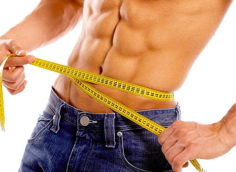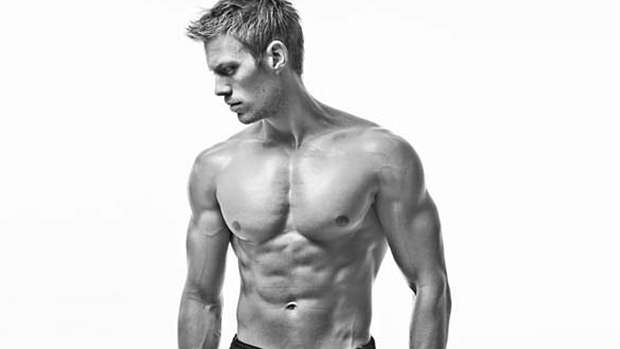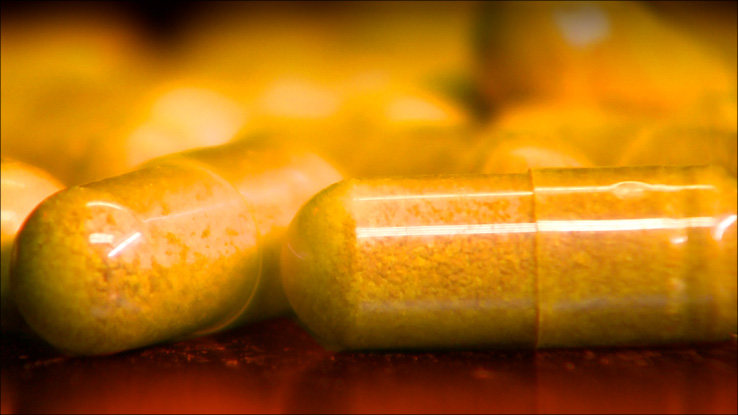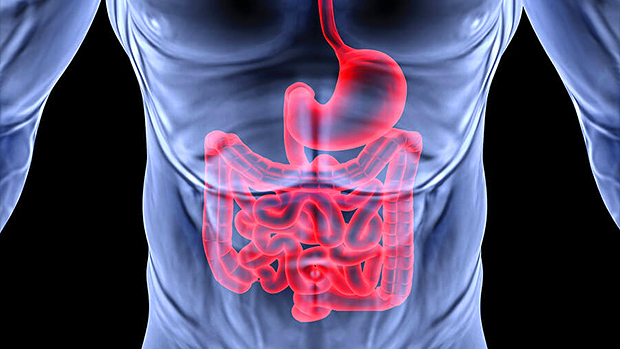Antioxidant supplementation is one of the most confusing areas of nutrition. Hell, if you read the average daily newspaper, you're met with a deluge of information about the latest and greatest alleged antioxidants. If you followed all of the advice of the nutritional pundits, you'd be popping pills filled with exotic substances all day long. It's enough to make the average health- and performance-minded athlete seek out antioxidant benefits from a six-pack or two of beer.
Luckily, Tom Incledon is here to shed some light on the subject. In Antioxidants - Part 1 of this article, Tom covered vitamin C, vitamin E, beta-carotene, N-acetyl-cysteine, and alpha lipoic acid. Part II continues with simple reviews of additional antioxidants and concludes with some guidelines for supplementation.
Coenzyme Q10, or Ubiquinone
Coenzyme Q10 (CoQ10) is an antioxidant involved in ATP production. Although we produce the stuff in our bodies, some speculation has been that maybe we don't make enough and could benefit from additional supplementation. The studies don't show any really consistent results.
For instance, 100 mg of CoQ10 or placebo was given to ten male bicycle racers every day for eight weeks.(1) The racers performed graded cycle ergometry tests both before and after treatments. The trouble was that supplementation with CoQ10 didn't significantly affect cycling performance, maximal oxygen consumption, or markers of oxidative stress.
Another study found no effects of 150 mg per day for two months on the ability to do aerobic exercise,(2) at least, no more of a boost than you'd get from playing an Abba song really loud.
In a third study, CoQ10 supplementation of 90 mg per day significantly improved physical performance in 25 Finnish top-level cross-country skiers.(3) There was some preliminary evidence that 120 mg of CoQ10 per day increased muscle damage in humans after intense anaerobic cycling exercise. But the formal study hasn't been published yet, so the information must be considered cautiously.(4)
As you can see, CoQ10 studies lack consistent results. Perhaps recent evidence, which has correlated several factors with plasma CoQ10 levels, can make things easier to understand.(5) These factors include serum cholesterol, triglycerides, gender, alcohol intake, age, and intensity of exercise.
These factors should be considered in studies but, unfortunately, most of the time they're not. This may partially explain why there may be discrepancies in the scientific literature. And, you also have to keep in mind that different methods are used to test for oxidative stress, in addition to using different exercises in different studies. This makes comparing results even tougher.
Selenium
Selenium is a micromineral that serves as a component of glutathione peroxidase, an important antioxidant enzyme. As part of a ten-week endurance-training program, 180 micrograms per day given to 12 male subjects increased glutathione peroxidase levels.(6) No effects were found on performance, though.
From that information, we might speculate that antioxidant status was improved, but no markers of oxidative stress were measured. In similar studies, selenium was speculated to increase the efficiency of glutathione peroxidase (7) and found to have no effect on endurance-training adaptations.(8) So again, adding this substance to your antioxidant mix remains controversial.
Whey Protein
We all know that whey protein is easy to digest and that it increases protein synthesis, but its use as an antioxidant may surprise some. Here's how it works.
The production of glutathione, an important cellular antioxidant, depends upon how much cysteine can get inside of a cell.(9) NAC can increase glutathione levels. However, side effects have been associated with certain NAC treatments (see section on NAC in Part I). Certain cysteine-containing molecules called glutamylcystine have been shown to increase cellular glutathione levels in vitro.(10) Whey proteins that contain these cysteine donors have also been shown to increase glutathione levels in mice.(11)
With the premise that oxidative stress contributes to muscular fatigue,(12) researchers hypothesized that supplementation with a whey-based cysteine donor (Immunocal), therefore, would improve performance.(13) Ten healthy men and ten healthy women were tested before and after three months of Immunocal or a casein placebo, both administered at 20 grams per day.
The results indicated that both peak power and 30-second work capacity on a cycle ergometer increased significantly in the Immunocal group, with no change in the placebo group. White blood cell glutathione levels increased significantly in the Immunocal group, with no change in the placebo group.
What remains to be determined is if the beneficial properties of whey are specific to Immunocal or are applicable to all whey proteins. Thus far, most of the research concerning humans and whey protein has been done using Immunocal, so if other manufacturers' whey proteins are as good, you have to wonder why they aren't doing any work to prove it. As new evidence comes out on this, we'll keep you posted.
Antioxidant Mixtures
Since antioxidants appear to have a beneficial effect when studied individually, a logical approach would be to combine various antioxidants to see if there's a synergistic effect on performance. After all, this is what most of us do — mix about ten different substances together and hope that we don't hurl. As logical as it seems that mixtures of antioxidants would decrease free-radical formation and/or damage, research has offered conflicting results.
Taken for three weeks before a marathon run, 90 mg of Q10 and 13.5 mg of vitamin E (d-alpha-tocopheryl acetate) had no effect on low-density lipoprotein cholesterol (LDL-C) oxidation or muscular damage.(14) Taken over a six-week interval, 100 mg of CoQ10, 600 mg of ascorbic acid, and 270 mg of alpha-tocopherol had no effect on maximal oxygen uptake, muscle energy metabolism, or muscle fatigue in triathletes.(15) Likewise, 600 mg of ALA and 400 IU of alpha-tocopherol, taken daily for two months, wasn't any better than 600 mg of ALA alone in reducing oxidative stress in healthy subjects,(16) and prior treatment with ALA may have masked the effects of the ALA and vitamin E combo.
In contrast to these studies, other studies using higher dosages indicate a potential role for antioxidants to reduce oxidative stress. Eight endurance athletes received 294 mg of vitamin E, 1,000 mg of vitamin C, and 60 mg of ubiquinone daily for four weeks before a 31-km run.(17) Antioxidant supplementation decreased the susceptibility of LDL-C and serum to oxidation, most likely due to an elevation in serum alpha-tocopherol concentration.
Over 32 days during a regular competition season, 600 mg of alpha-tocopherol, 1,000 mg of vitamin C, and 32 mg of beta-carotene (or a placebo) were given to professional basketball players of the First Spanish League.(18) The antioxidant mixture decreased oxidative stress and prevented the development of a marginal vitamin C status in the players during the season. However, it had no effect on their ability to talk trash.
In another study, 20,000 IU of beta-carotene, 400 IU of vitamin E, 500 mg of vitamin C, 100 micrograms of selenium, and 30 mg of zinc were given to Marines exposed to work at moderate altitude.(19) Despite supplemental antioxidants, work in a moderate-altitude, cold-weather environment was accompanied by increased oxidative stress.
Dietary Antioxidants
The preceding sections focused on antioxidant supplementation. An article on antioxidants would be incomplete if it didn't discuss the effects of dietary antioxidants.
Fruits and vegetables contain far more antioxidants than you might guess. Numerous studies have shown that the consumption of fruits and vegetables is associated with a decrease in the incidence of cancer and cardiovascular disease risk factors.(20-23) Foods such as green tea, black tea, fresh garlic, kale, spinach, Brussels sprouts, alfalfa sprouts, broccoli flowers, beets, red bell peppers, onions, corn, eggplant, cauliflower, potatoes, sweet potatoes, cabbage, leaf lettuce, string beans, and carrots have all been found to contain antioxidant activity.(24)
In addition, various phytonutrients in foods such as red wine, soy protein, grapes, blueberries, prunes, strawberries, tomatoes, and raisins have all been found to contain substances that function as antioxidants and tame free radicals. While I could go on and on about how wonderful fresh fruits and vegetables are for you, hopefully you've already realized this.
The point that I'd like to make is that many times I'm asked what supplements to take when the subject is following some strange diet, no doubt devised on Mars for creatures who's main nutrient source is rocks. Why not stick with the tried-and-true stuff before worrying about supplements?
Some people might blanche at this, but I see no problem with altering dietary strategies throughout the training process. Of course, you need to have planned out ahead of time. Imagine going into the gym not knowing what you'll be training that day! Sounds absurd, yet this is exactly the approach that people use when planning their nutritional strategy. So, the take-home message is to plan out your diet and include lots of fresh fruits and vegetables. You see, your mother was right after all.
Other Antioxidants
Panax ginseng G115 treatment for three months was recently shown to reduce exercise-induced oxidative stress in the livers of rats.(25) Lutein, gingko biloba, bioflavonoids in tea and red wine, various carotenoids (besides beta-carotene), lycopene, monoterpenes (from vegetables), pycnogenol, BHT, BHA, and microhydrin are examples of some of the other antioxidants that aren't covered in this article.
At the time that I wrote this, I wasn't able to find any scientific evidence of these agents reducing oxidative stress from exercise. While many of them may have some potential in the future, I think that it's premature to start making recommendations for their use with respect to decreasing oxidative stress from exercise when we don't have any research to guide us.
Since studies are coming out every day in journals everywhere, don't be surprised if one or more of these agents is added to our antioxidant cocktail in the next few months. Some of the above agents may still have therapeutic applications, but that's beyond the focus of this article and, hence, those applications won't be considered at this point.
Making Sense of It All
The focus in this two-part article was on trying to find an antioxidant formula that would work for decreasing oxidative stress from exercise. The significance of such a formula would have implications for health as well as exercise performance. The information presented is far from a complete review of the scientific literature. For further information, I offer some book suggestions at the end of this article.
When working with athletes, non-athletes, and diseased populations, the questions always seem to come down to what exactly should be taken to decrease oxidative stress. In an ideal world, we'd simply run some tests on you to determine exactly what antioxidants are low and, therefore, be able to precisely tell you what you need to take. Unfortunately, there's a tremendous discrepancy over which markers are best for determining antioxidant status.
In addition, more practical issues include where to go to get this work done and the costs involved. There are very few skilled personnel to perform and interpret these types of tests. Furthermore, it'll often require some serious cash.
The following guidelines aren't intended for people with diseases, nor are they intended to take the place of your personal practitioner's advice. For healthy athletes in sports with a seasonal schedule, the primary goal in the off-season and the pre-season is to eat five or more pieces of fruits and vegetables every day. This is important because it will load up your system with antioxidant nutrients.
When in-season comes around and you travel on the road, your diet will probably resemble a McDonald's menu, so you'll need the foundation that a healthier diet provides. Bodybuilders, powerlifters, weightlifters, and other athletes not involved in a traveling situation or a seasonal sport, however, have no excuse. Plan to eat or plan to fail — it's a simple choice, so make the right one.
In addition to following a decent diet, I'd encourage the following antioxidant strategy with breakfast or the first meal of the day. The same mixture should be taken again with the last meal of the day:
- 250-500 mg of vitamin C
- 300 mg of ALA
- 30-45 mg of CoQ10
- 400 IU of vitamin E-mixed tocopherols and tocotrienols
Notice that there's no recommendation for beta-carotene, NAC, or selenium. A sweet potato, some carrots, and other orange/yellow foods will supply all of the beta-carotene and other carotenoids that you need. If you're eating a decent diet, then you're already getting these aforementioned items, so supplementing with them is unnecessary.
If you're taking in at least one scoop of whey protein (especially Immunocal), then you don't need any NAC. Selenium and most minerals are easy to attain when eating nuts, vegetables, fish, and dairy products. For example, an ounce of Brazil nuts offers 840 micrograms of selenium! It may not all be bioavailable, but it's still a very healthy dose. Fish also offers significant amounts of selenium.
When an athlete is traveling on the road, experiencing a very stressful phase of training (sometimes called overreaching or overshooting — a short, planned period of overtraining), eating a terrible diet, or sickness (a cold), oxidative stress will be much greater. A more appropriate strategy would be to utilize higher dosages of antioxidants. This is best viewed as short-term (three to four months) and not a strategy that one follows year-round. Take the following antioxidants three times, spaced evenly throughout the day:
- 500-1,000 mg of vitamin C
- 300 mg of ALA
- 10-15 mg of beta-carotene
- 30-45 mg of CoQ10
- 30 micrograms of selenium
- 1-2 scoops of whey protein
- 300-400 IU of vitamin E-mixed tocopherols and tocotrienols
If you work out or have practice in the morning, try to take the first antioxidant mixture prior to your activity. It may help to cut down on the stress of exercise, although the evidence on this is fairly weak at this point.
A consistent intake of antioxidants, whether from diet or supplementation, is important in preventing oxidative stress. Missing meals or skipping supplements won't help you achieve our goals. The simple strategy presented above is one that I've used on myself, in addition to many of the people with whom I work.
It seems to work, too. Women report a decrease in delayed-onset muscle soreness, especially if the above supplements are taken with zinc. In my experience, men seem slower to respond than women, but they report fewer muscle aches and pains, a decrease in the number of times that they get sick, and claim to recover faster and fatigue less.
I realize, as most of you may, that this feedback is very subjective. Unfortunately, it's all that we have right now until doctors and labs get sophisticated enough to help us out more objectively. However, my goal with my clients is to develop effective strategies that work. And when things don't work, I get late-night phone calls with lots of cursing, and emails with the same. So far, this hasn't been happening — either a super-duper placebo effect is going on, or just maybe I'm on to something.
For Further Reading
Books which readers may want to consider purchasing for further reading are "The Antioxidant Revolution" by Kenneth Cooper, MD (26) and "Antioxidants and Exercise" by Jan Karlsson, PhD.(27)
Dr. Cooper is widely recognized as the father of aerobics, based upon his 1968 book "Aerobics," which started the fitness craze.(28) Get his book if you don't have a science background and want things explained in lay terms.
Karlsson, however, is a former professor in sports and exercise physiology from the internationally recognized Karolinska Institute in Stockholm, Sweden. Get his book if you need more technical details or want to have a reference text in your library.
"Antioxidant Food Supplements in Human Health" (edited by Lester Packer, Midori Hiramatsu, and Toshikazu Yoshikawa) is another book for the scientific-minded.(29) It covers far more nutrients than the other two books. So, if you want to buy just one book, this may be it.
References
- Braun, B., et al., Effects of coenzyme Q10 supplementation on exercise performance, VO2max, and lipid peroxidation in trained cyclists. International Journal of Sport Nutrition, 1991. 1(4): p. 353-365.
- Porter, D.A., et al., The effect of oral coenzyme Q10 on the exercise tolerance of middle-aged, untrained men. International Journal of Sports Medicine, 1995. 16(7): p. 421-7.
- Ylikoski, T., et al., The effect of coenzyme Q10 on the exercise performance of cross-country skiers. Molecular Aspects of Medicine, 1997. 18(Suppl): p. S283-90.
- Malm, C., et al., Supplementation with ubiquinone-10 causes cellular damage during intense exercise. Acta Physiologica Scandinavica, 1996. 157(4): p. 511-2.
- Kaikkonen, J., et al., Determinants of plasma coenzyme Q10 in humans. FEBS Letters, 1999. 443(2): p. 163-6.
- Tessier, F., et al., Selenium and training effects on the glutathione system and aerobic performance. Medicine and Science in Sports and Exercise, 1995. 27(3): p. 390-396.
- Zamora, A.J., et al., Mitochondria changes in human muscle after prolonged exercise, endurance training and selenium supplementation. European Journal of Applied Physiology & Occupational Physiology, 1995. 71(6): p. 505-11.
- Margaritis, I., et al., Effects of endurance training on skeletal muscle oxidative capacities with and without selenium supplementation. Journal of Trace Elements in Medicine & Biology, 1997. 11(1): p. 37-43.
- Anderson, M.E., Glutathione and glutathione delivery compounds. Adv Pharmacol, 1997. 38: p. 65-78.
- Anderson, M.E. and A. Meister, Transport and direct utilization of gamma-glutamylcyst(e)ine for glutathione synthesis. Proc Natl Acad Sci USA, 1983. 80(3): p. 707-11.
- Bounous, G. and P. Gold, The biological activity of undenatured dietary whey proteins: role of glutathione. Clin Invest Med, 1991. 14(4): p. 296-309.
- Sen, C.K., Oxidants and antioxidants in exercise. Journal of Applied Physiology, 1995. 79(3): p. 675-686.
- Lands, L.C., V.L. Grey, and A.A. Smountas, Effect of supplementation with a cysteine donor on muscular performance. Journal of Applied Physiology, 1999. 87(4): p. 1381-5.
- Kaikkonen, J., et al., Effect of combined coenzyme Q10 and d-alpha-tocopheryl acetate supplementation on exercise-induced lipid peroxidation and muscular damage: a placebo-controlled double-blind study in marathon runners. Free Radical Research, 1998. 29(1): p. 85-92.
- Nielsen, A.N., et al., No effect of antioxidant supplementation in triathletes on maximal oxygen uptake, 31P-NMRS detected muscle energy metabolism and muscle fatigue. International Journal of Sports Medicine, 1999. 20(3): p. 154-8.
- Marangon, K., et al., Comparison of the effect of alpha-lipoic acid and alpha-tocopherol supplementation on measures of oxidative stress. Free Radical Biology & Medicine, 1999. 27(9-10): p. 1114-21.
- Vasankari, T.J., et al., Increased serum and low-density-lipoprotein antioxidant potential after antioxidant supplementation in endurance athletes. American Journal of Clinical Nutrition, 1997. 65(4): p. 1052-6.
- Schroder, H., et al., Nutrition antioxidant status and oxidative stress in professional basketball players: effects of a three compound antioxidative supplement. International Journal of Sports Medicine, 2000. 21(2): p. 146-50.
- Pfeiffer, J.M., et al., Effect of antioxidant supplementation on urine and blood markers of oxidative stress during extended moderate-altitude training. Wilderness & Environmental Medicine, 1999. 10(2): p. 66-74.
- Eaton, C.B., et al., Cross-sectional relationship between diet and physical activity in two southeastern New England communities. American Journal of Preventive Medicine, 1995. 11(4): p. 238-44.
- DeMarini, D.M., Dietary interventions of human carcinogenesis. Mutation Research, 1998. 400(1-2): p. 457-65.
- Lloyd, T., et al., Fruit consumption, fitness, and cardiovascular health in female adolescents: the Penn State Young Women's Health Study. American Journal of Clinical Nutrition, 1998. 67(4): p. 624-30.
- Singh, R.B., et al., The diet and moderate exercise trial (DAMET): results after 24 weeks. Acta Cardiologica, 1992. 47(6): p. 543-57.
- Cao, G., E. Sofic, and R.L. Prior, Antioxidant capacity of tea and common vegetables. Journal of Agricultural and Food Chemistry, 1996. 44: p. 3426-3431.
- Voces, J., et al., Effects of administration of the standardized Panax ginseng extract G115 on hepatic antioxidant function after exhaustive exercise. Comparative Biochemistry & Physiology. Part C Pharmacology, Toxicology, Endocrinology, 1999. 123(2): p. 175-84.
- Cooper, K.H., Dr. Kenneth H. Cooper's antioxidant revolution. 1994, Nashville: T. Nelson Publishers. xiii, 242.
- Karlsson, J., Antioxidants and exercise. 1997, Champaign, IL: Human Kinetics. x, 211.
- Cooper, K.H., Aerobics. 1968, New York: M. Evans; distributed in association with Lippincott Philadelphia. 253.
- Packer, L., M. Hiramatsu, and T. Yoshikawa, Antioxidant food supplements in human health. 1999, San Diego: Academic Press. xxv, 511.





